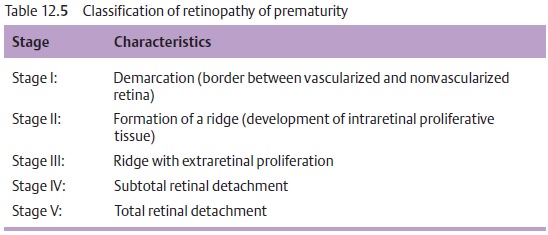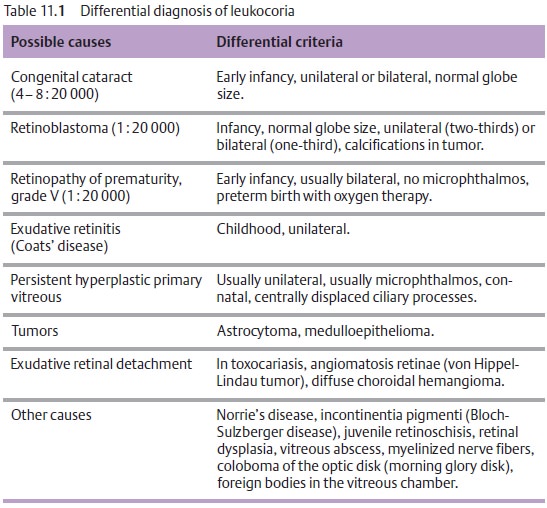Chapter: Ophthalmology: Retina
Retinopathy of Prematurity
Retinopathy of Prematurity
Definition
A retinal disorder attributable to disruption
of normal development of the reti-nal vasculature in preterm infants with birth
weight less than 2500 g.
Epidemiology:
The disorder is rare. Infants with birth weight below 1000 gare
at increased risk of developing the disorder. Retinopathy of prematurity is not
always preventable despite optimum care and strict monitoring of partial
pressure of oxygen.
Etiology:
Preterm birth and exposure to oxygen disturbs the normal
develop-ment of the retinal vasculature. Vessel obliteration occurs, followed
by pro-liferative neovascularization. This results in vitreous hemorrhage,
retinal detachment, and, in the late scarring stage, retrolenticular
fibroplasia as ves-sels and connective tissue fuse with the detached retina.
Findings and symptoms:
After an initially asymptomatic clinical course, vit-reous hemorrhage or retinal detachment will be accompanied by secondary strabismus. Leukocoria can occur in the retrolenticular fibroplasia stage. Table 12.5 shows the classification of the various stages.

As is customary in ophthalmology, the extent
of the respective abnormal change is specified by analogy to a clock face. For
example a demarcation line may be said to extend from one to six o’clock. A
plus stage includes dilated and tortuous vasculature of the posterior pole in
addition to the other changes.
Diagnostic considerations:
The retina should be examined with the pupildilated four weeks
after birth at the latest. This may be done as part of the routine examination
of the newborn. Follow-up examinations will depend on the degree of retinal
vascularization.
Differential diagnosis:
Other causes of leukocoria such as retinoblastoma orcataract
(see Table 11.1) should be
considered.

Treatment:
Surgery is rarely successful in stages IV and V. In stage III,
laserphotocoagulation or cryotherapy is performed in the nonvascularized
por-tion of the retina.
Prophylaxis:
Partial pressure of oxygen should be kept as low as possible,
andophthalmologic screening examinations should be performed.
Early detection of retinopathy of prematurity
is particularly important.
Clinical course and prognosis:
Stage I and II retinopathy resolves spon-taneously in 85% of all
affected children.
Related Topics